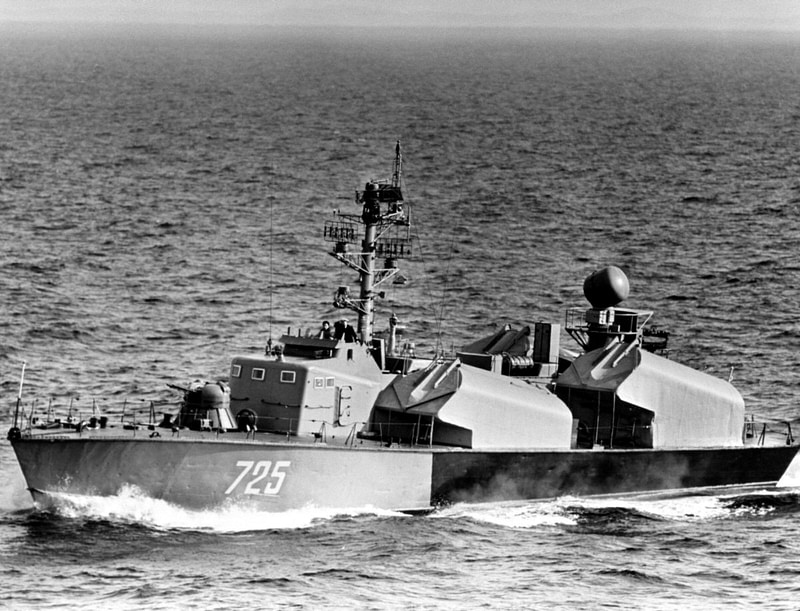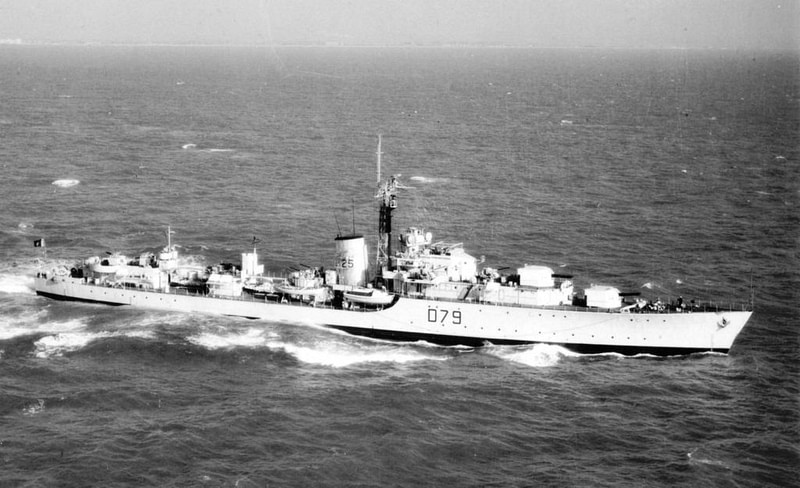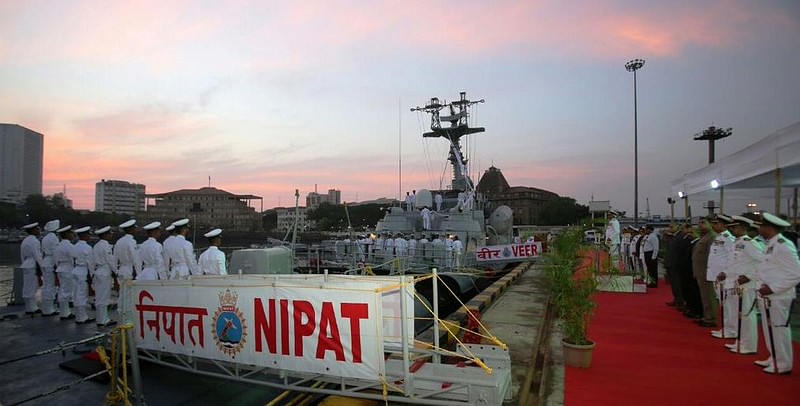Operation Trident,1971: How Indian Navy Pulled Off One Of Its Greatest Victories over Pakistan, Karachi burned for seven days

Potential adversaries cannot be deterred by mere threats or rhetoric, but by the possession of a combination of such capabilities, which are far superior to their own. It is thus reassuring that the ongoing force accretion measures of the Indian Navy are endowing it with a war-fighting potential, which can be unleashed with ferocity, if required.
India has a rich history of naval warfare. In fact, Indian ships have made their presence felt since the time of Rajendra Chola’s 10th-century naval expedition to Southeast Asia and Maratha Admiral Kanhoji Angre’s 18th-century naval battles against the British, the Dutch and the Portuguese.
This tradition of remarkable military exploits has continued even post-independence, with the Indian Navy playing a key role in at least four major military operations after 1947. There are several stories and anecdotes in the annals of the Indian Navy that illustrate why it has earned the reputation of a force to be reckoned with.
But the most celebrated among them is the story of the audacious naval operation commemorated by India’s Navy Day, Operation Trident. Here’s the fascinating story of the mission that proved to be a turning point in the 1971 Indo-Pak war.
The Indian Navy celebrates its Navy Day on December 4 to mark the operational success of the attack on Karachi, during the 1971 Indo-Pak War. Code named “Operation Trident,” it was aimed to degrade and demoralise the Pakistan Navy, as the defence of Karachi harbour was paramount to Pakistan. The port city received some of the best defence Pakistan had to offer, as well as cover from strike aircraft based at two airfields in the area.
 An Osa I missile boat |
Since Indian Navy Vidyut class missile boats had limited range, the plan for Operation Trident called for towing the missile boats towards Karachi and including a refuelling tanker in the task force to enable the task force to return back to Indian ports. The Vidyut class vessels were each armed with four SS-N-2B Styx surfaceto-surface missiles with a range of 40 nm (about 75 km).
On December 4, 1971, the task group for the operation consisted of three Vidyut class missile boats, INS Nipat, INS Nirghat and INS Veer from the 25th “Killer” Missile Boat Squadron, escorted by two anti-submarine Arnala class corvettes, INS Kiltan and INS Katchall, and a fleet tanker, INS Poshak. The task group was led by the Commanding Officer of the 25th Squadron, Commander B.B. Yadav, embarked on INS Nipat.
Sinking PNS Khaibar
As per the operational plan, the task group reached 250 nm (about 460 km) south of Karachi and stayed in the area during the day, outside the range of Pakistan Air Force (PAF). The plan was to attack Karachi at night because most PAF aircraft did not possess night-bombing capability. In the evening on December 4, INS Kiltan and the three missile boats approached Karachi, evading Pakistani reconnaissance aircraft and surface patrol vessels. At 2230 hours Pakistan Standard Time (PST), the task group converged about 70 nm (about 130 km) south of Karachi and detected Pakistani targets, analysed as warships, about 70 km to the north-west and north-east.
INS Nirghat then steered towards and engaged the north-westerly target and after verification fired the first SS-N-2B Styx missile at the destroyer, PNS Khaibar, which was on patrol. Khaibar mistook the missile to be an aircraft and engaged it with its anti-aircraft guns. The missile struck Khaibar on the starboard side and exploded below the aft galley in the electrician’s mess deck, at about 2245 hours PST.
The ship immediately lost propulsion, plunged into darkness and the No. 1 boiler room exploded, engulfing the ship in thick black smoke. Khaibar sent out an emergency transmission to the Pakistan Naval Headquarters (PNHQ) which read: “Enemy aircraft attacked in position 020 FF 20. No. 1 boiler hit. Ship stopped.” In the panic of the attack, the transmission sent incorrect coordinates of the ship’s position, which resulted in delays in rescuing the survivors later. With the target still afloat, at about 2249 hours, INS Nirghat fired a second missile, which was seen approaching and again engaged with anti-aircraft guns of Khaibar. The missile struck the No. 2 boiler room on the starboard side, sinking PNS Khaibar.
 PNS Khaiber |
Sinking PNS Muhafiz and MV Venus while damaging PNS Shah Jahan
At 2300 hours, INS Nipat engaged two targets to the north-east, approaching Karachi. Verifying the targets, Nipat launched 1 Styx missile each at the MV Venus Challenger and its destroyer escort PNS Shah Jahan. It was believed that MV Venus Challenger was carrying ammunition for Pakistan from the US forces in Saigon. The ammunition on the Venus Challenger immediately exploded as the missile struck, sinking it about 42 kilometres south of Karachi. The other missile hit PNS Shah Jahan which was badly damaged. At 2320 hours, the minesweeper PNS Muhafiz was targeted by a Styx missile from INS Veer. The missile hit Muhafiz on the port side abaft the bridge, instantaneously disintegrating the vessel before it could send a transmission to the PNHQ.
INS Nipat continuing towards Karachi, locked on to the Kemari oil storage tanks of the port from 14 nm (about 30 km) south of the harbour. It fired two missiles at the tanks. One of the missiles misfired, while the other hit the fuel tanks, which were burnt and destroyed, causing heavy loss. The task force then withdrew back. Overall, the Indian Navy missile attack was carefully planned and executed well. The attack achieved complete surprise and was a shock to Pakistan’s Armed Forces Command. A disjointed and haphazard rescue operation was launched to locate and recover survivors of PNS Khaibar, while PNHQ was not aware of the sinking of PNS Muhafiz. PNHQ learnt of the fate of Muhafiz from its survivors who were rescued when a patrol vessel steered towards its burning flotsam while searching for survivors from the Khaibar. Operation Trident was considered an enormous success for the Indian Navy with no casualties or damage to the Indian Task Group, which returned safely back to Indian ports. The success of this operation prompted another successful attack on Karachi on December 8, 1971, known as Operation Python.
 The Karachi harbour on fire |
In hindsight, the success of the 1971 operations could be traced to Indian Navy decisions in the late 1960s. Year 1969 and 1970 had been busy years for the Indian Navy. This period had witnessed induction of five Petya class submarine chasers (Kamorta, Kadmatt, Kiltan, Kavaratti and Katchall), four submarines (Kalveri, Khanderi, Karanj and Kursura), submarine depotship (amba), submarine rescue vessel (Nistar) and two Polish-built landing ships LST (M)s (Gharial and Guldar).
In the 1970-71 period, the Indian Navy latest acquisitions were the eight Soviet missile boats which were at various stages of acceptance and delivery (Nashak, Nipat, Nirghat, Nirbhik, Vinash, Veer, Vijeta and Vidyut).
The success of the attack was also attributable to the weak opposition offered by the Pakistani Navy. In the Pakistan of 1960s, the Pakistan Navy continued to be accorded a lower priority and the fleet was allowed to degenerate into a shrinking force quite incapable of taking on the task of providing protection to the sea lines of communication between the two wings i.e. East Pakistan (now Bangladesh) and West Pakistan. The Pakistan Navy particularly lacked an air reconnaissance capability which was to prove a significant factor in the outcome of the 1971 war.
 Indian Navy decommissions two Veer class ships |
The Indian Navy has thus created history owing to the blazing success of Operation Trident and Operation Python during 1971. Can a 1971 type attack operation be replicated in this day and age?
The answer to this question is convoluted, owing to the geopolitics and geoeconomics of the present era. The Cold War, under the overhang of which the 1971 operations took place, is long over. Further, in the last decade, the north Arabian Sea has been inundated with warships and merchant vessels of many countries, thus constricting the space for surprise naval operations.
Thus, the question does not have easy answers. However, an overview of the present status of the Indian Navy is encouraging. In the ensuing 40 years since Operation Trident, the Indian Navy has grown by leaps and bounds. Without doubt, it is today a transformed, multidimensional and immensely more powerful entity, than it was in 1971. It is clearly evident that the Indian Navy, as in 2012, is in the middle of its most impressive growth plan, which would catapult it into a truly world-class force.
References:
defencelover.in - By Raghav Gakhar
en.wikipedia.org
spsnavalforces.com - By Commander (Retd) Neil Gadihoke
thebetterindia.com - By Sanchari Pal
 Support Us
Support Us
Satyagraha was born from the heart of our land, with an undying aim to unveil the true essence of Bharat. It seeks to illuminate the hidden tales of our valiant freedom fighters and the rich chronicles that haven't yet sung their complete melody in the mainstream.
While platforms like NDTV and 'The Wire' effortlessly garner funds under the banner of safeguarding democracy, we at Satyagraha walk a different path. Our strength and resonance come from you. In this journey to weave a stronger Bharat, every little contribution amplifies our voice. Let's come together, contribute as you can, and champion the true spirit of our nation.
 |  |  |
| ICICI Bank of Satyaagrah | Razorpay Bank of Satyaagrah | PayPal Bank of Satyaagrah - For International Payments |
If all above doesn't work, then try the LINK below:
Please share the article on other platforms
DISCLAIMER: The author is solely responsible for the views expressed in this article. The author carries the responsibility for citing and/or licensing of images utilized within the text. The website also frequently uses non-commercial images for representational purposes only in line with the article. We are not responsible for the authenticity of such images. If some images have a copyright issue, we request the person/entity to contact us at This email address is being protected from spambots. You need JavaScript enabled to view it. and we will take the necessary actions to resolve the issue.
Related Articles
- On 16th Aug 1946, during Ramzan's 18th day, Direct Action Day aimed to provoke Muslims by mirroring Prophet Muhammad's victory at Badr, Gopal 'Patha', the Lion of Bengal, heroically saved Bengali Hindus & Calcutta from a planned genocide, altering history
- Prophecies of Jogendra Nath Mandal getting real after seventy years of his return from Pakistan
- Haunting history- 50 years of Operation Searchlight in Dhaka
- Past unfolding: Hindu holy city of Dwarka was targeted by Pakistan in 1965 with an aim to destroy it
- Gandhi emphasized that he won't salute Indian National Flag if Charkha is replaced by Ashoka Chakra and wanted British flag added to it
- An Artisan Heritage Crafts Village: Indigenous Sustainability of Raghurajpur
- ISRO mum on 684 staff dead: 197 suicides and 1,733 deaths at India's nuclear establishments in last 15 yrs
- Operation Polo: When India annexed Hyderabad from the Nizam and Razakars, the suppression of Hindus and the role of Nehru
- Can Communism and Democracy Coexist - 100 Years of Russian Revolution
- Indian Army pacing towards self-reliance under 'Atmanirbhar Bharat Abhiyaan’ campaign: Indigenisation of defence manufacturing is helping to build a new and strong India to keep neighbour aggression in check
- Nehru's Himalayan Blunders which costed India dearly - Pre-Independence
- The Islamic Doctrine of Permanent War: Jihãd and Religious Riot
- Winston Churchill's hate for Indians caused millions of deaths: A villainous supremacist
- A Great man Beyond Criticism - Martyrdom of Shaheed Bhagat Singh (Some Hidden Facts)
- Moplah Genocide of the Malabar Hindus, 1921: Thousands of Hindus slaughtered













